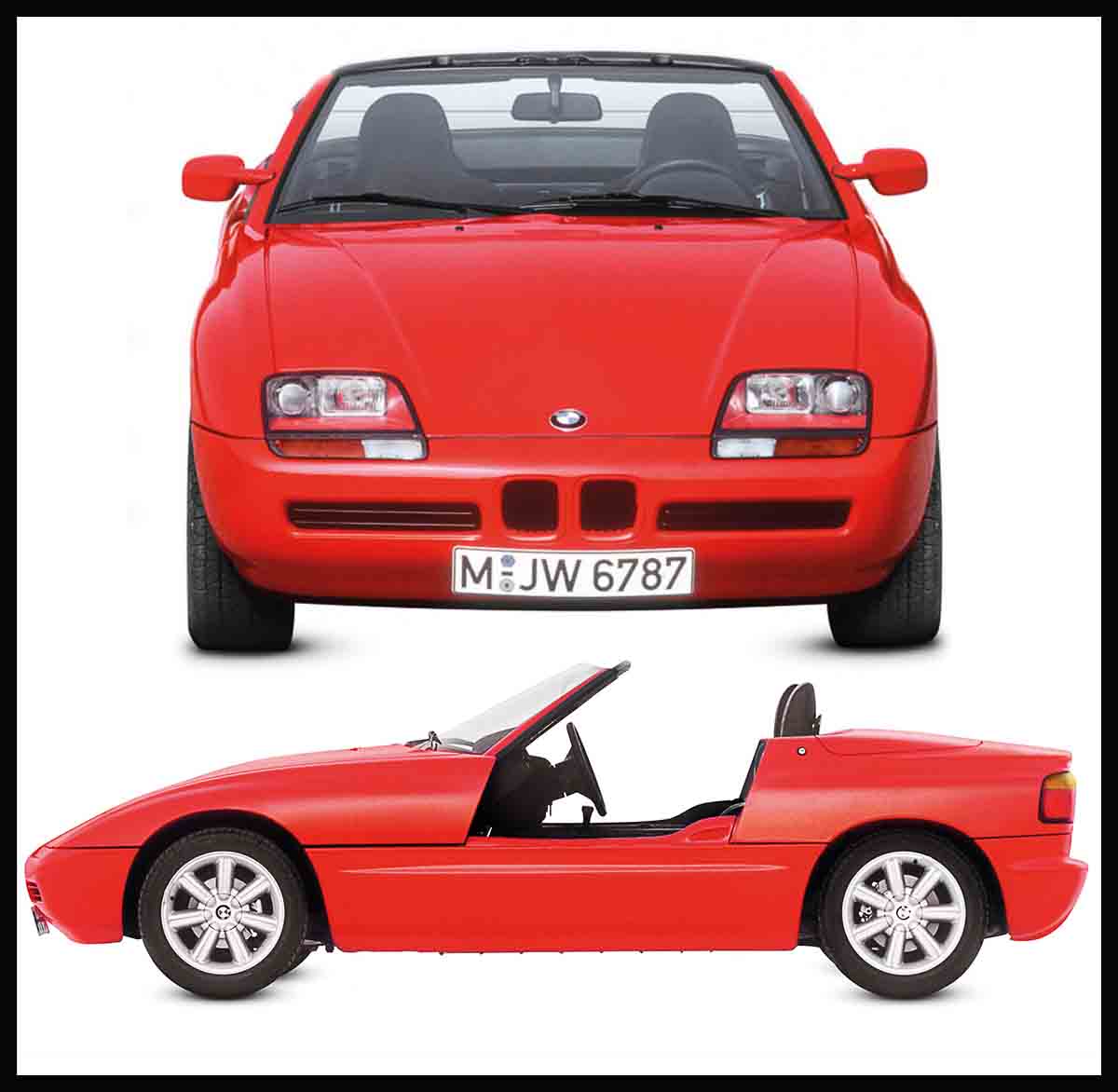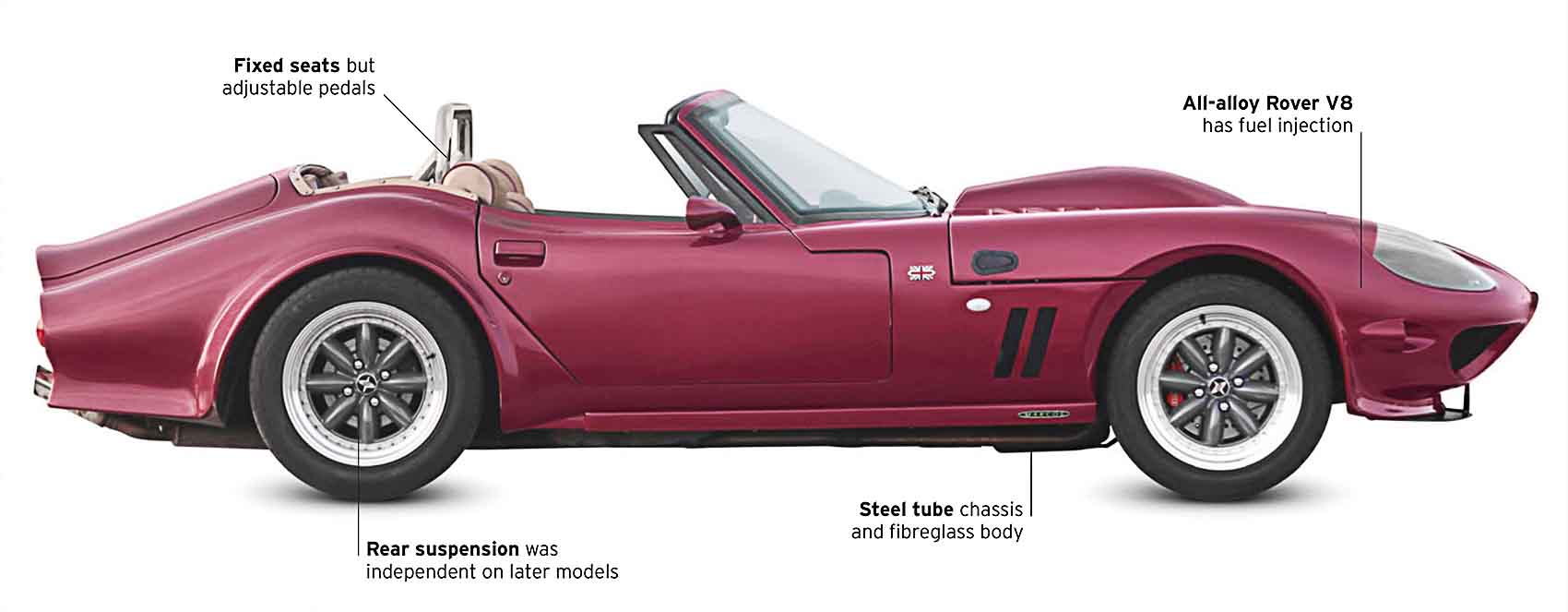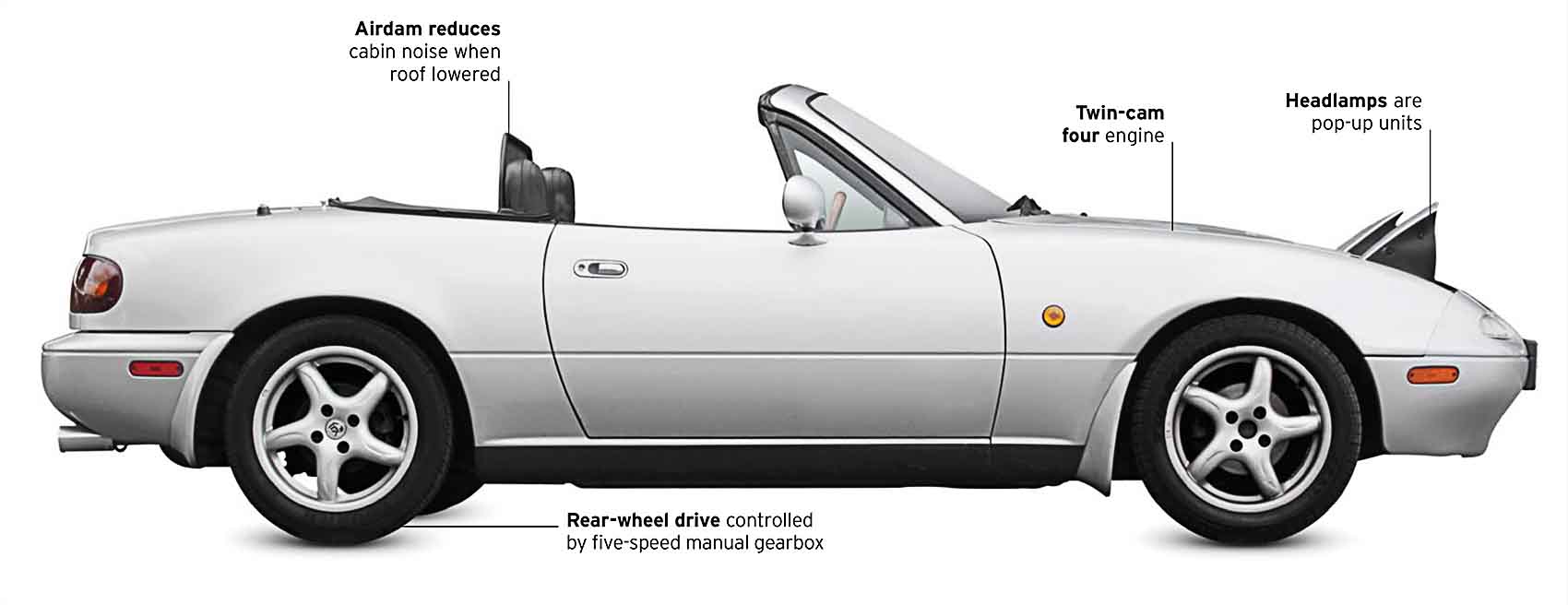
Two-Seater Roadsters
Planned US legislation threatened to outlaw convertibles—which meant almost all sports cars—but the expected new laws were never implemented. By the 1980s sports cars still in production were antiquated, but a few survived and adopted new engines and running gear to compete with a whole new generation of sports cars aiming to take their place. Most adopted the traditional front-engine, rear-drive layout but there were mid-engined cars, experiments with front-wheel drive, and even some that eschewed the open roadster body for a compact, fixed-roof shape. It was a renaissance for the sports car.
BMW Z1, 1986

| Origin | Germany |
| Engine | 2,494 cc, straight-six |
| Top speed | 140 mph (225 km/h) |
BMW’s first two-seater roadster since the 507 of the 1950s had a novel steel platform with plastic outer panels that were easily removable, and drop-down doors. Suspension was from the E30 3 series at the front, with a new multilink rear. The company sold 8,000 cars.

Tradition updated
BMW front-ends featured twin nostrils, known as “kidneys”, from prewar days. For the Z1 the intakes were sunk into the plastic nose, bumper, or air dam moulding. Despite the shovel-nose shape, the headlamps were not pop-up units.

Driving environment
BMWs became well-known for the carefully considered ergonomics of their interiors, with well-placed controls. The Z1’s occupants also benefited from wraparound sports seats that kept them securely located during hard cornering.
Marcos Mantula, 1984

| Origin | UK |
| Engine | 3,947 cc, V8 |
| Top speed | 150 mph (241 km/h) |
The classic Marcos of the 1960s sprang back to life in the 1980s as the Mantula. The biggest change was the adoption of a gutsy Rover V8 engine, which increased power and at the same time reduced overall weight. Later there was a convertible Spyder version.
Toyota MR2, 1984

| Origin | Japan |
| Engine | 1,587 cc, straight-four |
| Top speed | 120 mph (193 km/h) |
The MR2 may not have been the first affordable mid-motor sports car, but it was certainly the best yet. A smooth and revvy 16-valve engine, pin-sharp handling, plus a decent ride and Toyota’s usual reliability made the MR2 an
Lotus Elan, 1989

| Origin | UK |
| Engine | 1,588 cc, straight-four |
| Top speed | 136 mph (219 km/h) |
Lotus’s only front-wheel-drive sports car—and the company’s first roadster since the 1970s this short-lived Elan was exciting to drive. Styling was by Peter Stevens, who had previously restyled the Esprit. The car’s Isuzu-built engine was usually turbocharged, though there was also a rare non-turbo model.
Mazda MX-5, 1989

| Origin | Japan |
| Engine | 1,597 cc, straight-four |
| Top speed | 114 mph (183 km/h) |
Inspired by the 1960s’ Lotus Elan, Mazda reintroduced the world to traditional open roadster fun with the MX-5, which was more comfortable and reliable than traditional open roadsters ever were. The car was a huge success and was known as the Miata in the US and the Eunos in Japan.
It is a quote. The Classic Car Book – The Definitive Visual History 2016




